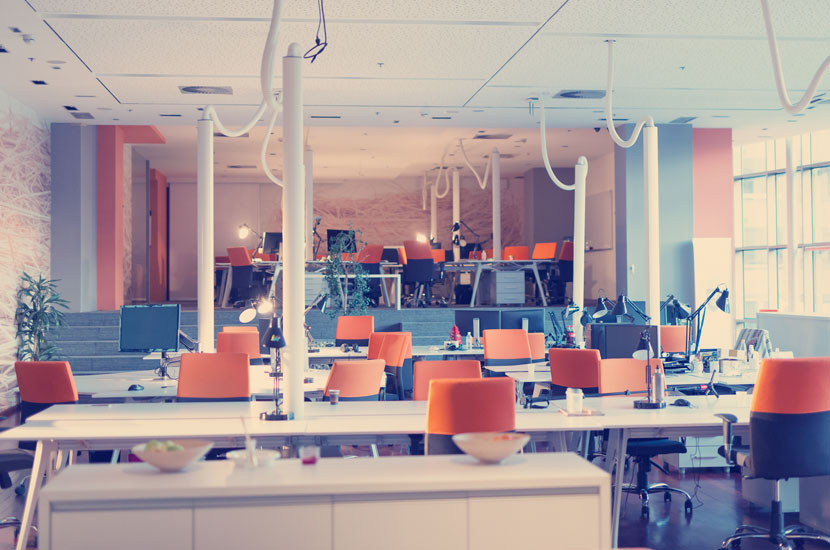The COVID-19 pandemic has forced organisations to re-evaluate their cleaning and disinfection protocols. In some cases, this has resulted in an increase in the frequency of cleaning, while in others, it has meant a change in the products being used.
However, as businesses began to reopen their doors and more employees returned to the office, many are wondering how to manage health and safety in a hybrid workplace – one that is part physical and part virtual.

One of the biggest challenges for businesses will be managing cleaning protocols for employees working in the office and those working from home. For employees who are working in the office, it will be essential to maintain a clean and safe environment. This may include increasing the frequency of cleaning, using EPA-approved disinfectants, and providing employees with personal protective equipment (PPE).
For employees who are working from home, there is still a need to maintain a clean and safe environment. However, this can be more challenging as businesses do not have as much control over the home environment.
There is always a risk that hot-desking employees will bring germs into the workplace. To reduce this risk, businesses should consider implementing a “clean desk policy”, which requires employees to maintain a clean and organised workspace.
What is Hybrid Workplace
A hybrid workplace is a workplace that combines elements of both traditional and remote work. Employees may work from a physical office or remotely from home or another location. A hybrid workplace can be helpful for businesses that want to offer employees the flexibility to work in different ways, but it can also be challenging to manage.
There are many advantages of a hybrid workplace. First, it allows employees to communicate and collaborate more efficiently. They can work together virtually, using video conferencing and instant messaging.
Second, it allows businesses to manage their resources more efficiently. Employees working from home can save the company money on office space and equipment.
Third, it allows employees to have more flexibility in their work schedules. This is especially beneficial for those with families or other commitments outside of work.
Finally, it allows businesses to tap into a wider pool of talent. Employees who cannot work in an office environment due to location or other reasons can still be productive team members working from home.
 Health and Safety at Hybrid Workplace
Health and Safety at Hybrid Workplace
To ensure the health and safety of employees working in a hybrid workplace, businesses must put specific guidelines and policies in place. Here are some tips:
A clear policy on expectations for remote work
There should be a clear policy on the expectations for remote work, including the hours’ employees are expected to work, the type of work that can be done remotely, and how to request permission to work remotely.
Most office back and wrist injuries occur while working long hours at a desk. To help reduce the risk of these injuries, it is crucial to have a clear policy on the maximum number of hours employees are allowed to work, the type of chair and table side that should be used, and the frequency of breaks.
Employees should know what is expected of them and how they are supposed to conduct themselves. There should be regular check-ins with employees to ensure they are doing okay and to see if there are any areas where they need support.
Proper Hot Desk Uses
If your office allows employees to come to the office for hot desk use, there should be a clear policy on how to use the hot desk, such as wiping down the surfaces before and after use, not eating at the desk, and only using it for work purposes.
Hybrid workplaces can be a breeding ground for germs if not sanitised properly. Here are a few tips for sanitising a hybrid workplace:
- Clean all surfaces weekly, including desks, phones, keyboards, and mice.
- Wipe down shared workspaces, such as conference rooms and kitchens, on a daily basis.
- Sanitise hands regularly, especially before eating.
- Avoid touching your face while at work.
 How to minimise the infection at the office
How to minimise the infection at the office
It is crucial to stop the spread of virus infection in the office. People coming for hot desking might take the infection home, potentially infecting their families. Here are some ways to reduce the risk:
- Encourage employees to clean their workstations with disinfectant wipes before and after use
- Place hand sanitisers in strategic locations around the office
- Promote respiratory etiquette by encouraging employees to cover their mouths and noses when sneezing or coughing
- Encourage employees to stay home if they are sick
- Arrange for regular cleaning of common areas such as meeting rooms, pantries and restrooms
If someone in the office becomes sick, it is vital to contain the virus. This may include:
- Asking the ill person to wear a face mask
- Isolating the sick person in a separate room or area away from other employees
- Thoroughly cleaning and disinfecting the areas that the ill person has been in contact with
By taking these precautions, you can help to minimise the spread of virus infection in the office and protect the health of your employees.
We can clean your office early in the morning, during the day or in the evening according to your requirements. We clean according to a schedule that works for you and do our utmost to provide impeccable cleaning with minimal disruption.
Contact our friendly team today to find out how we can meet your cleaning needs.
 Employers’ responsibility for hybrid workers
Employers’ responsibility for hybrid workers
Employers need to be proactive in addressing challenges when implementing a hybrid workplace. They should consult with employees to better understand their needs and preferences and work with them to develop guidelines that will promote a healthy and productive work environment.
Some specific challenges that need to be considered include:
- Ensuring that employees have the proper equipment and ergonomic furniture to support their work;
- Providing adequate ventilation and lighting in the workplace;
- Ensuring that employees have access to mental health support;
- Establishing clear communication channels and protocols;
- Creating a plan for managing sick leave and absences;
- Promoting regular cleaning and disinfecting of the workplace;
- Encouraging employees to get vaccinated against the flu.
Productivity and Mental Health
It can be difficult for some employees to adjust to working remotely, primarily if they are not used to it. Employers need to set expectations for productivity and provide support tools such as training, coaching, and mentoring programs.
Employers are also encouraged to address mental health challenges when implementing a hybrid workplace proactively.
A recent study found that employees who worked from home reported higher levels of job satisfaction and less stress than those who worked in the office.
The study also found that employees who worked from home were more productive than those who worked in the office. However, there was an increased risk of isolation for those working from home, so employers should take steps to mitigate this.
Some ways to promote mental health in a hybrid workplace include:
- Encouraging employees to stay connected with co-workers through social media and other online platforms;
- Offering telecommuting options that allow employees to work from home on specific days or during particular hours;
- Arranging regular team meetings or video conferences so employees can stay connected with their co-workers;
- Encouraging employees to take breaks throughout the day, even if they are working from home;
- Providing access to mental health support services.
 Adequate Security
Adequate Security
With so much sensitive data being shared online, security is a significant concern for businesses regarding remote workers. Employers must ensure that they have proper security measures, such as firewalls, anti-virus software, and encryption protocols.
Create a culture of trust
One of the benefits of having a physical office is that employees can come together and interact face-to-face. For a hybrid workplace to be successful, employers must create an environment where employees feel comfortable interacting online and offline. This may include using collaboration tools or social media platforms, setting up regular team bonding activities, and encouraging employee feedback.
By addressing these challenges, employers can create a successful hybrid workplace that benefits employees and the business.
Encourage Healthy Habits
There should be a focus on encouraging healthy habits among employees in the office and at home. This includes maintaining good posture, taking regular breaks, and eating healthy meals.
Additionally, employees should be encouraged to stay active and get regular exercise. These healthy habits will help improve employee productivity and morale while reducing the number of sick days taken each year.
 Encourage Work-Life Balance
Encourage Work-Life Balance
In a Family and Work Institute study, working mothers were more likely to report stress in their roles when working from home. This was because they thought they could not fully commit to their work responsibilities and always balance their work with their home responsibilities.
Similarly, fathers who worked from home also reported increased stress levels, but this was mainly due to them feeling guilty about not being able to spend enough time with their children.
While there are some challenges to working from home, there are also several benefits. One benefit is that you have more control over your time and can structure your day in a way that works for you. For example, if you need to take a break to pick up your child from school, you can do so without asking permission from your boss.
Another benefit is creating a work-life balance that works for you. For example, if you have young children, you can structure your day so that you can spend some time with them in the morning before they go to school and then have some time to work while they are at school.
Key Takeaway
While there are some challenges to hybrid working, such as maintaining a healthy work-life balance and feeling isolated, remote working has many benefits. These benefits include more control over your time, the ability to structure your day in a way that works for you, and the flexibility to work around your family’s schedule.
Employers who allow their employees to work remotely should take steps to mitigate these challenges by creating an environment where employees feel comfortable interacting online and offline, encouraging healthy habits, and ensuring that they have proper security, health and safety measures in place.
A clean and healthy workplace is the backbone of a successful business. However, most business owners notice things like that when things are completely out of control.
Instead, you need to ensure your offices are regularly cleaned and maintained to ensure that your employees are happy, healthy and productive while also leaving a good first impression on business partners and potential customers.




